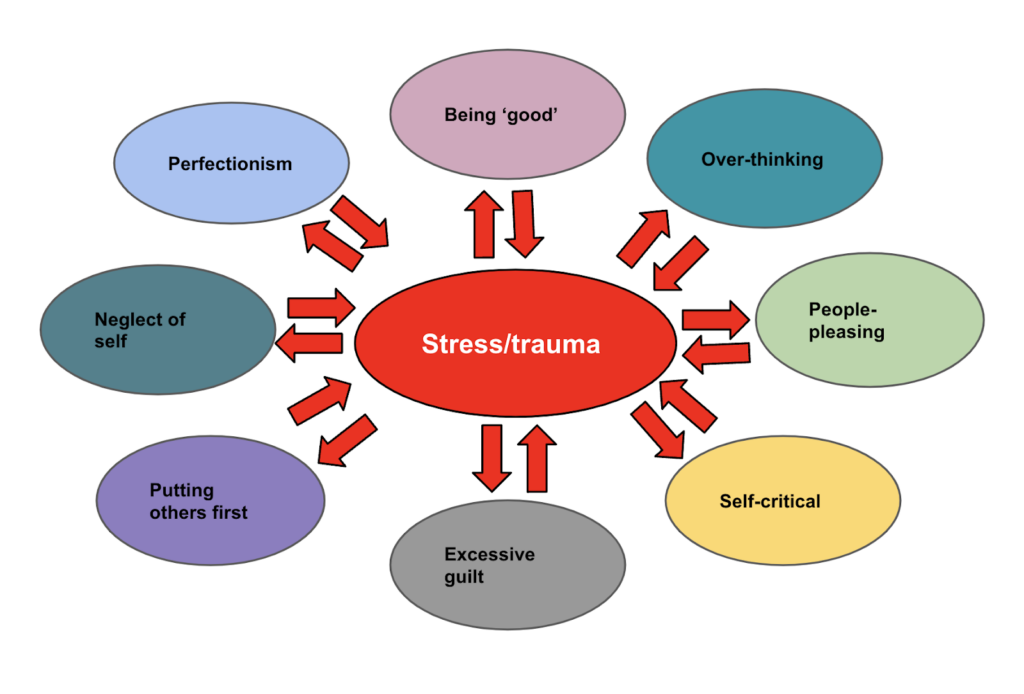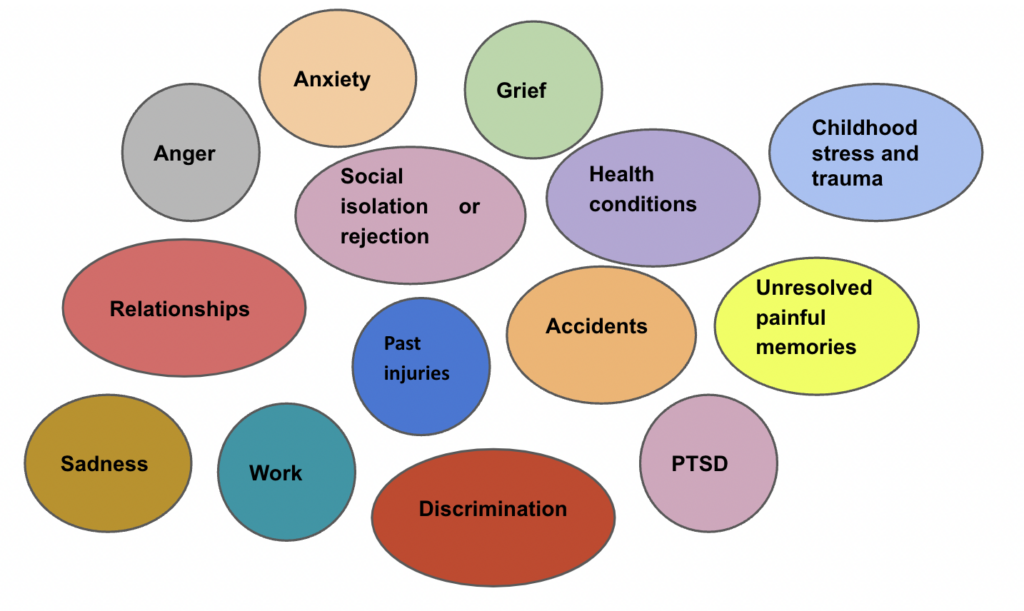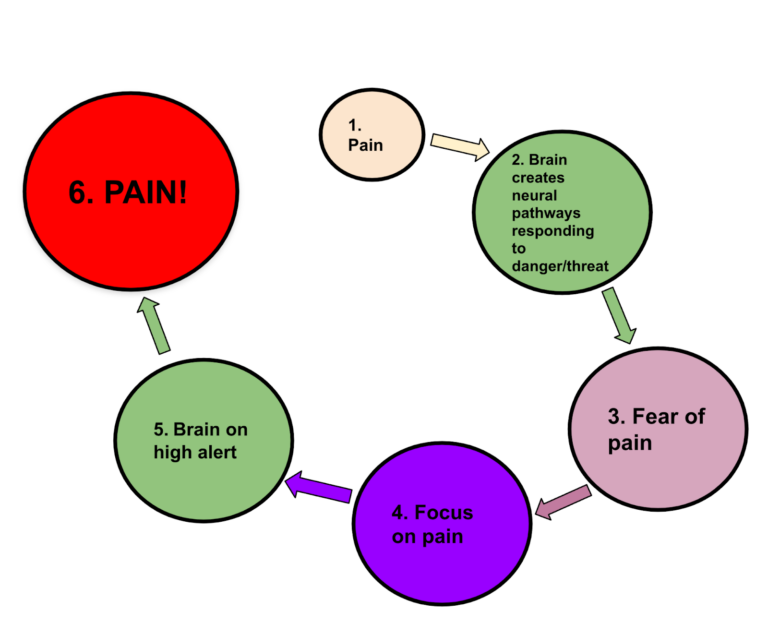Stress And Trauma In Chronic And Unexplained Pain
Stress Is Part Of Life
Some stress is good for you because it keeps you alert and engaged with the important and enjoyable things in life.
But past stress and trauma can also play a key role in chronic or unexplained pain.
What Do We Mean By Stress?
The stress of managing your finances, job, relationships, bereavement, parenting or being a carer, or even moving house are all stressful parts of our everyday lives.
But unresolved stress or trauma which you experienced as a child, or as an adult, can be carried with you forever.
Stress arising from personality traits, behaviours you’ve learned or that you use as a coping mechanism, such as the following, can all take their toll and cause physical symptoms:

Is Stress Causing My Symptoms?
Firstly your doctor should examine you to find out if your pain or symptoms are related to a medical condition, or nerve and tissue damage.
If none of these is found, the doctor may consider your symptoms to be ‘medically unexplained’. The NHS reports that up to 45% of visits to GP surgeries – and half of new visits to hospital clinics – are for ‘medically unexplained symptoms’.
The vast majority of these are likely to be stress-related.
How Does Emotional Stress Or Trauma Cause Physical Pain?
Your brain and your body are constantly communicating.
When your brain feels stressed, it tells your body what to do. For example, before a job interview you might notice your heart is beating faster, or you might have butterflies.
There are many stresses in our lives which make the brain feel stressed and in danger, causing it to move into its reactive, emotional, ‘fight/flight/freeze’ state, sending messages to the body to try to protect it.
Your brain is reacting to these stressful situations through its network of nerve (neural) pathways, gearing your body for action. This protective, physical response could include rapid breathing, muscle spasm, even pain.
These stresses are stored in the ‘Pain Parts’ of the brain.
Neuroscientists have found that your brain’s pain pathways can be triggered more easily if you find it difficult to manage stress, or have memories of past physical, sexual or emotional traumas which make you likely to feel under threat more than other people.
Evidence shows that these are the major factors which determine whether pain becomes chronic, not the severity of the original injury:

Your fear of pain, and focus on pain, keep the brain’s danger signals switched on to high alert. Neuroscience has discovered that the brain and nervous system can become wired to create continuous pain in the body. This can happen even after normal healing time from surgery, and when no structural or tissue damage can be found.

New symptoms can then emerge due to this cycle, or the experience of new stressful situations, including physical or emotional traumas.
The good news is that Functional MRI scans* of the brains of chronic pain patients have shown that, just as the brain learned to create these pain pathways, it can unlearn and deactivate them too!
* fMRI’s show brain activity by measuring blood flow between the regions of the brain
What can I do about my stress-induced symptoms?
If your pain has persisted beyond normal healing time, and if your doctor has done all the tests and found no explanation for your pain, it’s important that you’re able to accept that your pain might be mind-body related before you begin PRT.
This will help your brain to be receptive, helping it to rewire itself, stop overreacting to everyday stimuli, and stop sending mistaken pain signals.
How long does recovery take?
Some people find that once their underlying stress is understood and addressed, and they’ve begun to practise PRT techniques, they can experience recovery within weeks.
For others, the work they do may take significantly longer, depending on their experience of trauma and long-term chronic stress.
More good news is that research based on patient outcomes suggests there is no correlation between the length of time spent in chronic pain, and the time it takes for it to reduce or disappear.
Everyone is an individual on their own, personal journey
Is PRT suitable for my pain or symptoms?
Obviously, it’s important to rule out cancer, infections, fractures, muscle diseases, inflammatory conditions and nerve or tissue damage, but even in these cases, you can still benefit from PRT. You’ll learn key strategies for fear and pain reduction, as well as self-care and stress-management techniques, which will all help to minimise your suffering.

